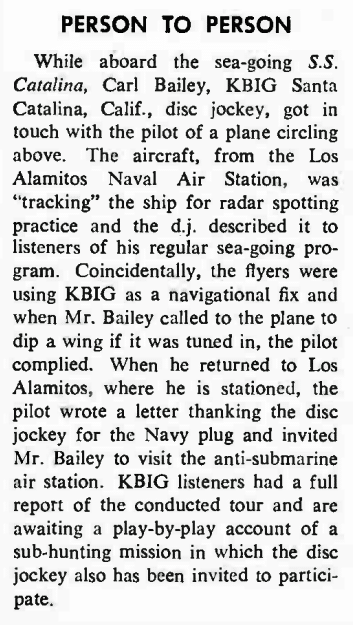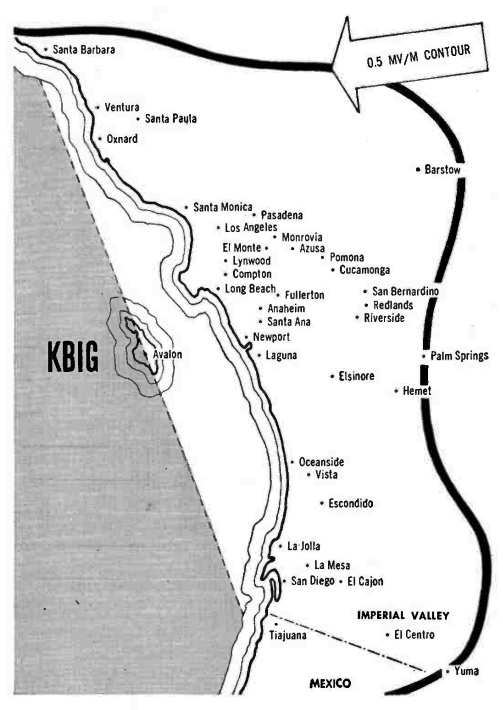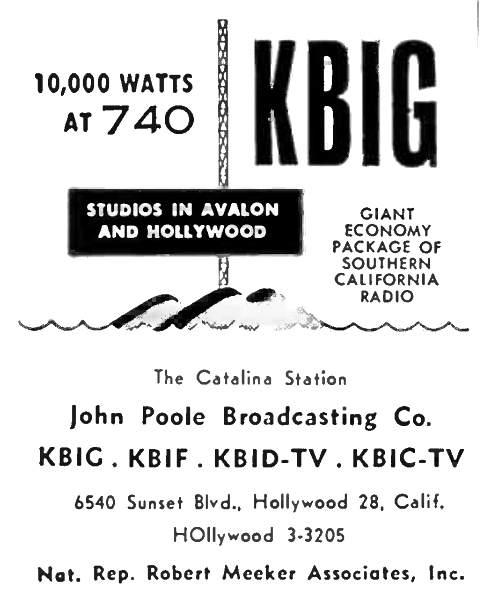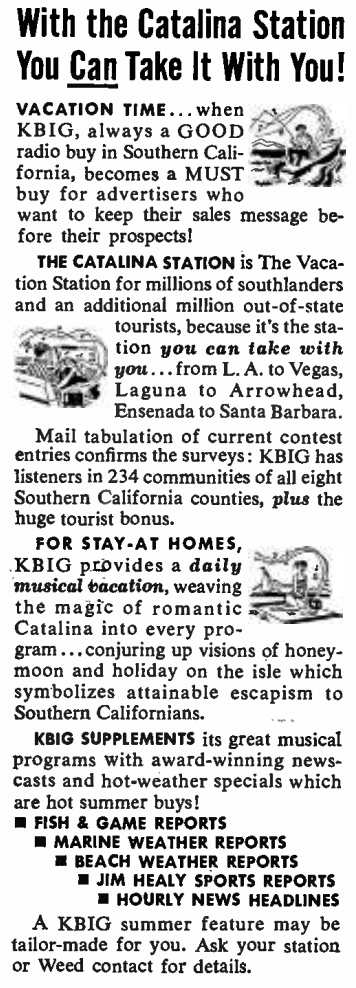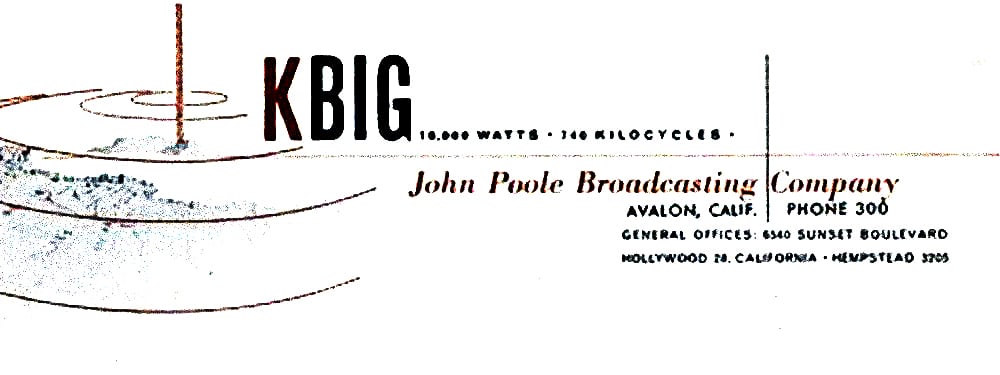KBIG AM 740: The Floating Radio Station on the S.S. Catalina
Introduction
KBIG AM 740 began broadcasting around June 1952 and became a notable station in Southern California’s radio history, particularly due to its broadcasts from the S.S. Catalina in the early 1950s. The station aired its programs while en route to the port of Avalon and was also known as Radio Catalina. The exact dates of these offshore broadcasts are not comprehensively documented in available historical records. However, it is known that the station’s founder, Carl Bailey, used the ship to establish a distinctive presence for KBIG in the early days of its operation in the Southern California radio market. The S.S. Catalina, a popular passenger ferry since 1924, became an unforgettable part of its history as a floating radio station.
Origin and Background
In 1952, broadcaster John H. Poole established a radio station on Catalina Island. Broadcasting at 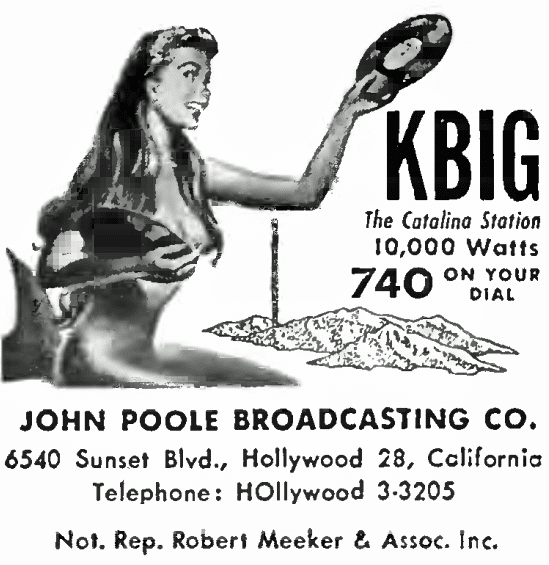
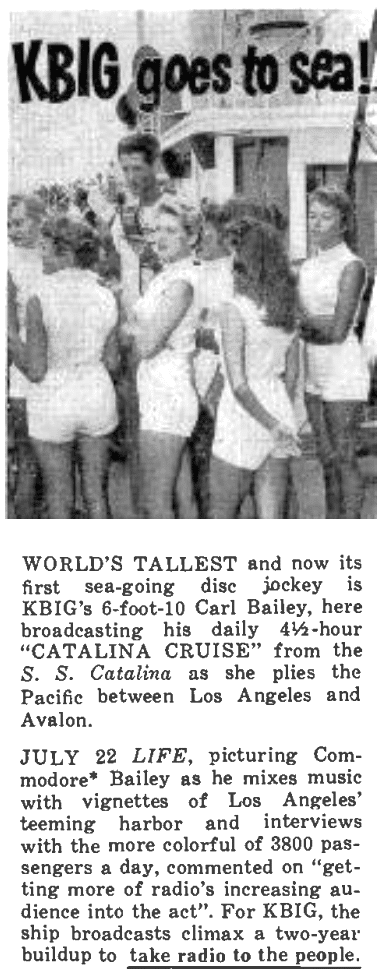
Carl “Mr. Big” Bailey was a prominent figure in the radio industry and envisioned creating a station that would stand out in the crowded Southern California market. A memorial on Wrigley Plaza along the waterfront in Avalon on Catalina Island honors Carl “Mr. Big” Bailey (born 1916, died 1984), who is considered “the first sea going disk jockey in the world”. Carl Bailey often broadcast live from the S.S. Catalina on weekends, with many KBIG listeners traveling alongside regular passengers on the journey to Avalon. Known as “Mr. Big” due to his height of 6 feet 10 inches, Carl would interview some of the passengers disembarking from the ship. These passengers knew that their families were eagerly waiting to hear if they had completed the 2 1/2 hour voyage safely. Through KBIG AM 740, they were able to hear their loved ones’ voices.The offshore broadcasts were a strategic move to capture the listeners’ imagination and leverage the established reputation and iconic status of the ferry.
The S.S. Catalina: The Great White Steamer
The S.S. Catalina, also known as “The Great White Steamer,” was a passenger ferry that operated between Los Angeles and Catalina Island. Commissioned in 1924, the ferry had a colorful history, transporting thousands of tourists to the island. It was built in 1923/24 specifically for ferry service to Catalina Island. From 1924 to 1975, with the exception of the World War II years when it transported troops in San Francisco Bay, it ran between Wilmington in the Inner Harbor and Avalon on the island. In the summer of 1952, it passed through the Main Channel of Los Angeles Harbor on its morning route to Avalon. It was scrapped in Ensenada, Mexico, in 2009.
- Tonnage: 1,766 GRT
- Length: 302 ft
- Beam: 52 ft
- Draft: 16 ft
- Decks: 5, including 3 for passengers
- Power: 3 Hooven-Owens-Rentschler Co. triple expansion engines
- Speed: 15.5 knots
Programming and Content
KBIG AM 740 offered a diverse program selection designed to appeal to a broad audience. The station’s content included:
- Music: The station played a mix of popular music genres, including Big Band, Jazz, and contemporary hits. This diverse mix catered to a broad range of musical tastes and helped establish KBIG’s identity.
- Live Performances: The station hosted live performances by various artists aboard the S.S. Catalina, creating a unique and intimate concert experience that was broadcasted to listeners.
- News and Talk Shows: KBIG AM 740 provided news updates, talk shows, and special segments that informed and entertained the audience. One notable show was “Catalina Conversations,” featuring interviews with local celebrities, island residents, and visitors.
- Community-Centric Features: The station frequently broadcast stories and events from Catalina Island, fostering a sense of connection among its listeners.
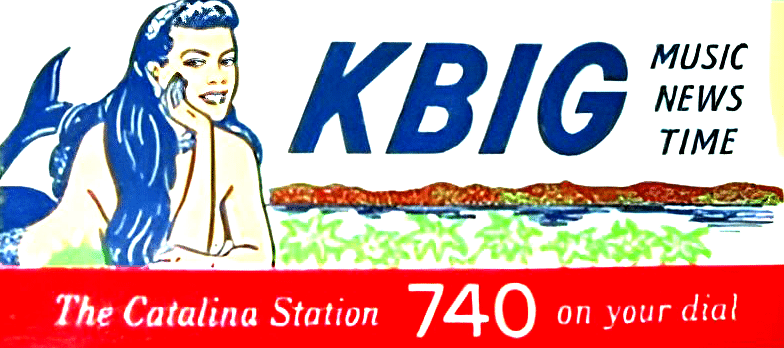
The Music
KBIG AM 740 played a diverse and popular selection of music aimed at a wide audience. The station’s programming in the 1950s included:
- Big Band Music: This genre, very popular in the 1930s and 1940s, still had a significant audience in the 1950s. KBIG played timeless hits from Big Band leaders like Glenn Miller, Benny Goodman, Lex Baxter and Duke Ellington.
- Jazz: Jazz music was also a staple of the KBIG lineup, featuring both classic jazz from earlier decades and contemporary jazz artists of the 1950s.
- Traditional Pop Standards: The station’s theme song was likely “Twenty Six Miles (Across the Sea)” by The Four Preps. KBIG’s playlist included artists such as Frank Sinatra, Dean Martin, Rosemary Clooney, Perry Como, Kay Starr, and Vic Damone.
- Instrumental Music: The station played instrumental pieces, including orchestral arrangements and mood music, which were particularly popular in the 1950s.
KBIG AM 740’s music programming in the 1950s and 1960s was characterized by a focus on smooth, melodic, and widely appealing music. This approach helped the station build a loyal audience and establish itself in the competitive Southern California radio market.
